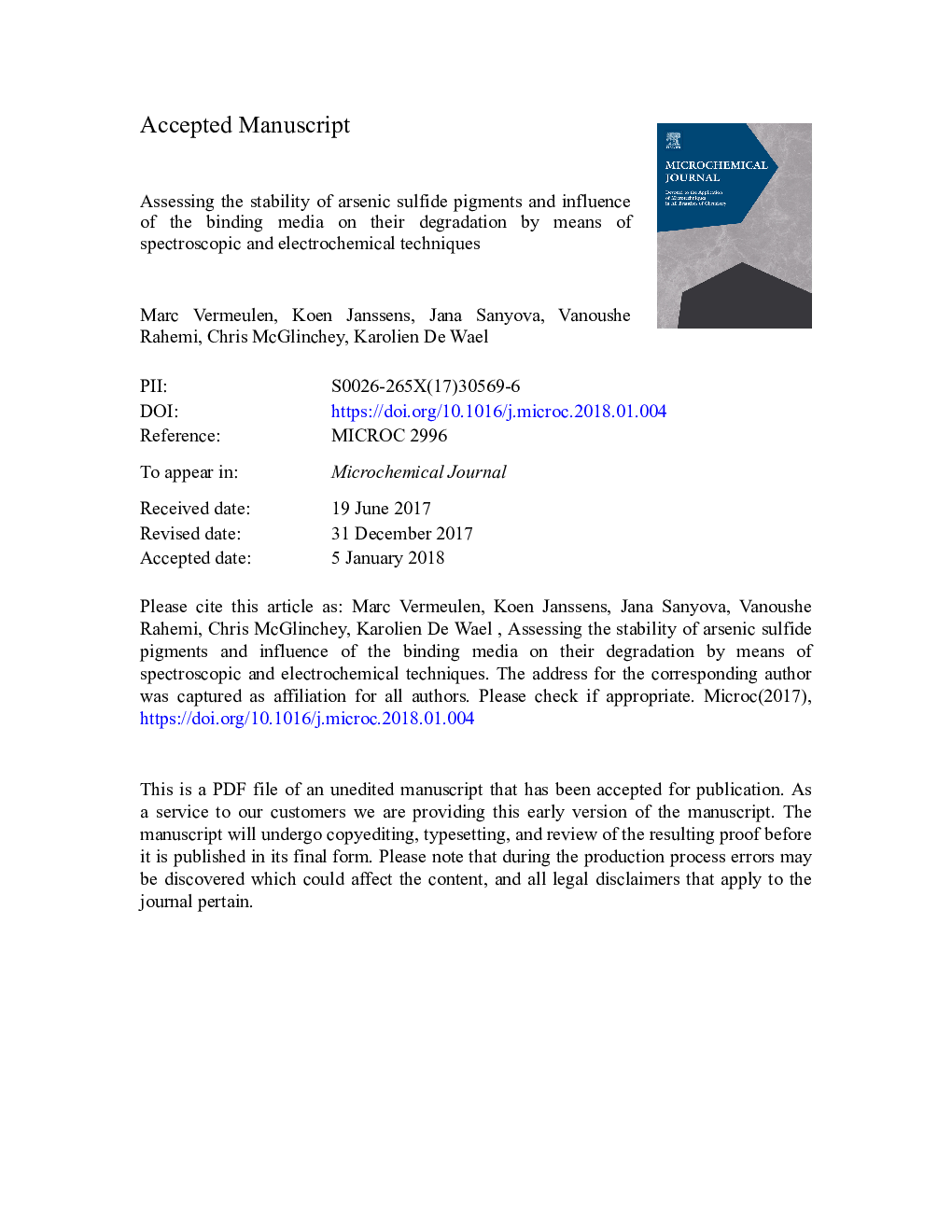| Article ID | Journal | Published Year | Pages | File Type |
|---|---|---|---|---|
| 7640809 | Microchemical Journal | 2018 | 31 Pages |
Abstract
In this paper, we used the semiconducting and lightfastness properties of synthetic and mineral arsenic sulfide pigments to study their stability by means of electrochemical and microfadometric techniques. A combination of these techniques shows that in the early stage of the degradation process, amorphous arsenic sulfides are more stable than both crystalline forms, while upon longer exposure time, amorphous pigments will fade more than both mineral pigments, making it less suitable. While the stability study was carried out on unbound pigments, the influence of the organic binder on the relative degradation of the arsenic sulfide pigments was investigated through a multi-analytical approach on pigment/binder mock-up paint samples. For this purpose, the formation of arsenic trioxide was assessed by micro Fourier transform infrared (μ-FTIR) spectroscopy while the influence of the binder on the formation of sulfates was studied by means of synchrotron radiation X-ray near edge structure (μ-XANES). Both techniques elucidate a higher stability of all pigments in gum arabic while the use of egg yolk as binder leads to the most degradation, most likely due to its sulfur-rich composition. In the context of the degradation of arsenic sulfide pigments, other binders such as animal glue, egg white or linseed oil show an intermediate impact.
Keywords
Related Topics
Physical Sciences and Engineering
Chemistry
Analytical Chemistry
Authors
Marc Vermeulen, Koen Janssens, Jana Sanyova, Vanoushe Rahemi, Chris McGlinchey, Karolien De Wael,
